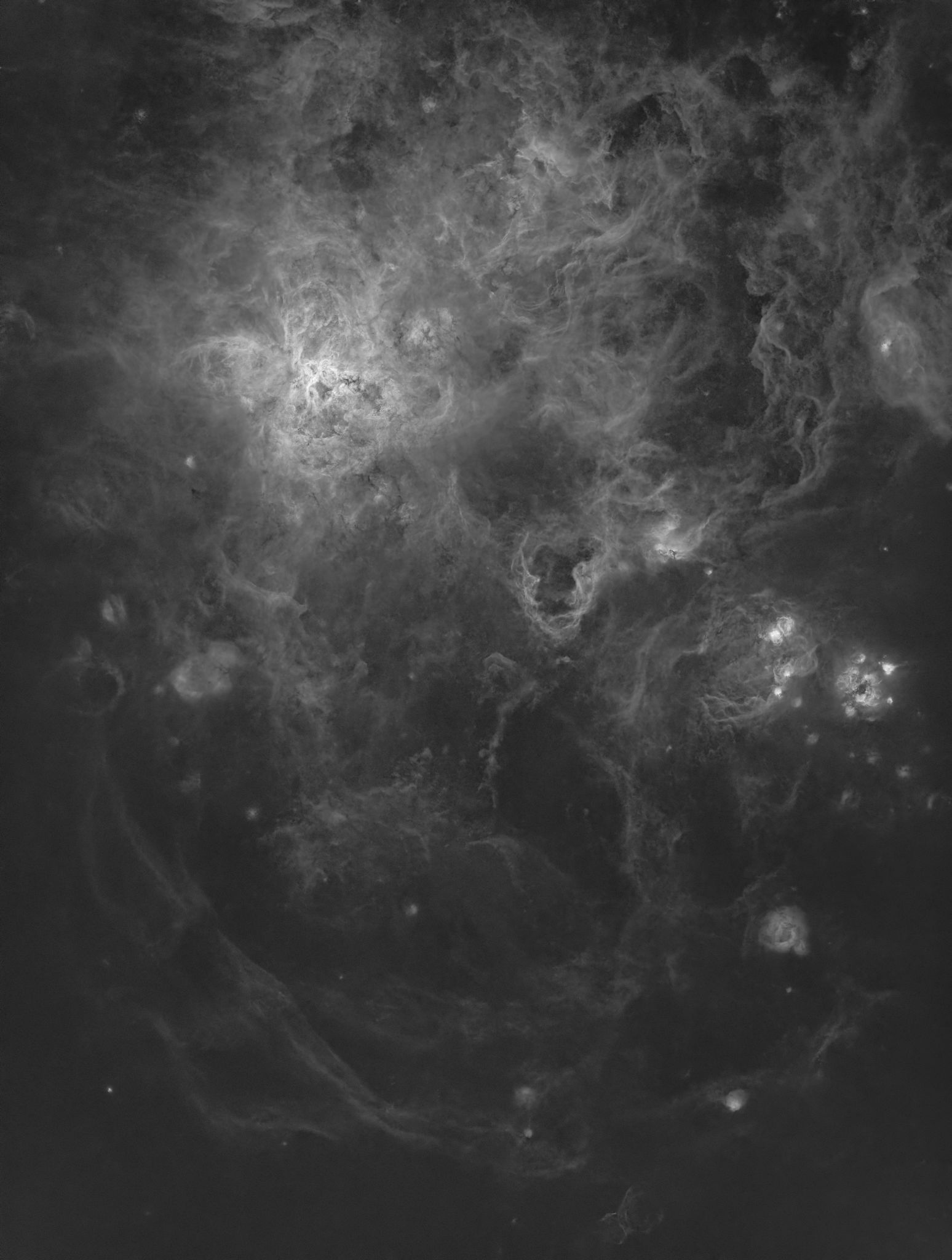Description:
The image features NGC 2070, more commonly known as the Tarantula Nebula, an active star-forming region located in the Large Magellanic Cloud.
The Tarantula Nebula’s vibrant hues are due to the heated gas, predominantly hydrogen, excited by radiation from the multitude of young, hot stars within its boundary. This nebula’s complexity, seen in the intertwined tendrils of red and pink glowing gas, coupled with dark dust lanes, gives it the resemblance to a tarantula, thus its name.
Central to the nebula is the star cluster NGC 2070, home to some of the most massive stars known. These supermassive stars are the primary contributors to the nebula’s radiant glow, with their intense stellar winds and radiation ionising the surrounding gas.





